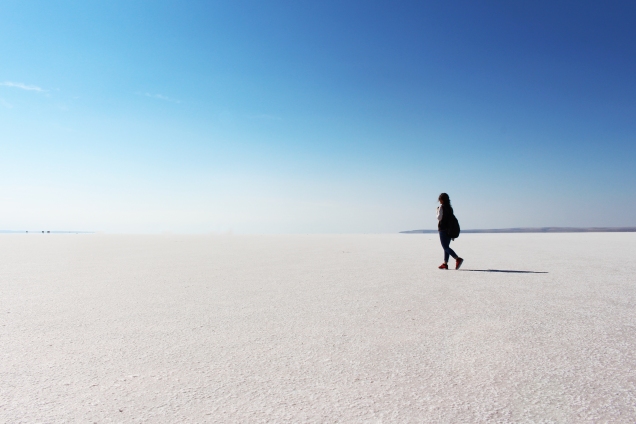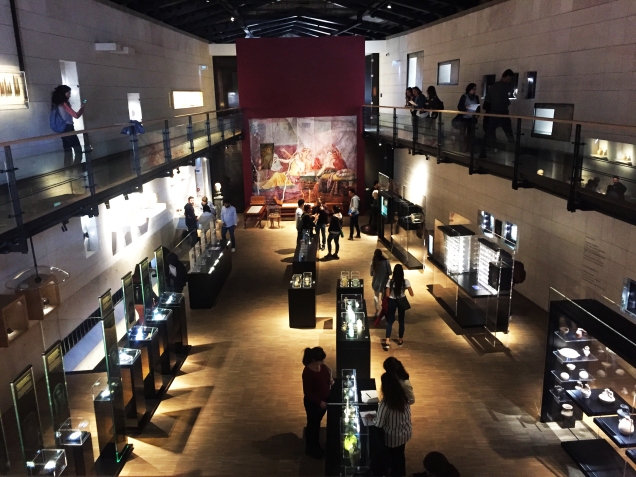Tuz Gölü is the second largest lake in Turkey. It is located in the central Anatolia region. We observed salt lake. My observation about Tuz Gölü is that there were building at the entrance of the lake. After we passed through buildings, we saw a huge flat area. There were mountains but they were far away from the area we stand. In the morning, we saw horizon line and it attracted us and it made us think that there is a lake which is not dry. That’s why, we directly walked towards the horizon line. It was like both a boundary and a focal point. Because we did not know how it will be felt when we touch it. We decided to walk towards the horizon line instead of the mountains.

Our aim was to reach it but we could not go much far away from the beginning. While we were walking at the same time, we were experiencing the around so that it took much time but on our way back, we arrived in short time because we already had experienced the environment while going.
The sun, wind and sound were other experiences we had in the lake. In the first part of the lake, there was noise of vehicles which came from the road but the noise decreased progressively in the morning. Moreover, we were not able to hear each other clearly. However, in the night, the noise was less compared to the morning and we were able to hear each other clearly. In addition to these, the weather was cold because of wind condition in the morning. Wind comes from the northeast direction and when it comes from our behind, our speed increased so weather conditions affected our orientation. We were there about at 10 a.m. and that time walking towards the horizon line, while the sunlight was coming to our eyes and the wind was blowing behind us, was not easy.
Until we came to salty surface of lake, we experienced certain texture differentiations such as inside the buildings and in the transition part between buildings and lake. The surface inside the buildings was concrete floor. The transition part had vegetations and the lake had salty ground.
Lately Salt Lake is in great danger because of industrial pollution and wrong usage of under and over ground waters. This is threatening the lake itself but also flora and fauna of the area, which will definitely have a negative effect on the local inhabitants around the lake.
There is a kind of alg which is living under the lake and it is painting the lake pink.
References: www.allaboutturkey.com/tuzlake


































